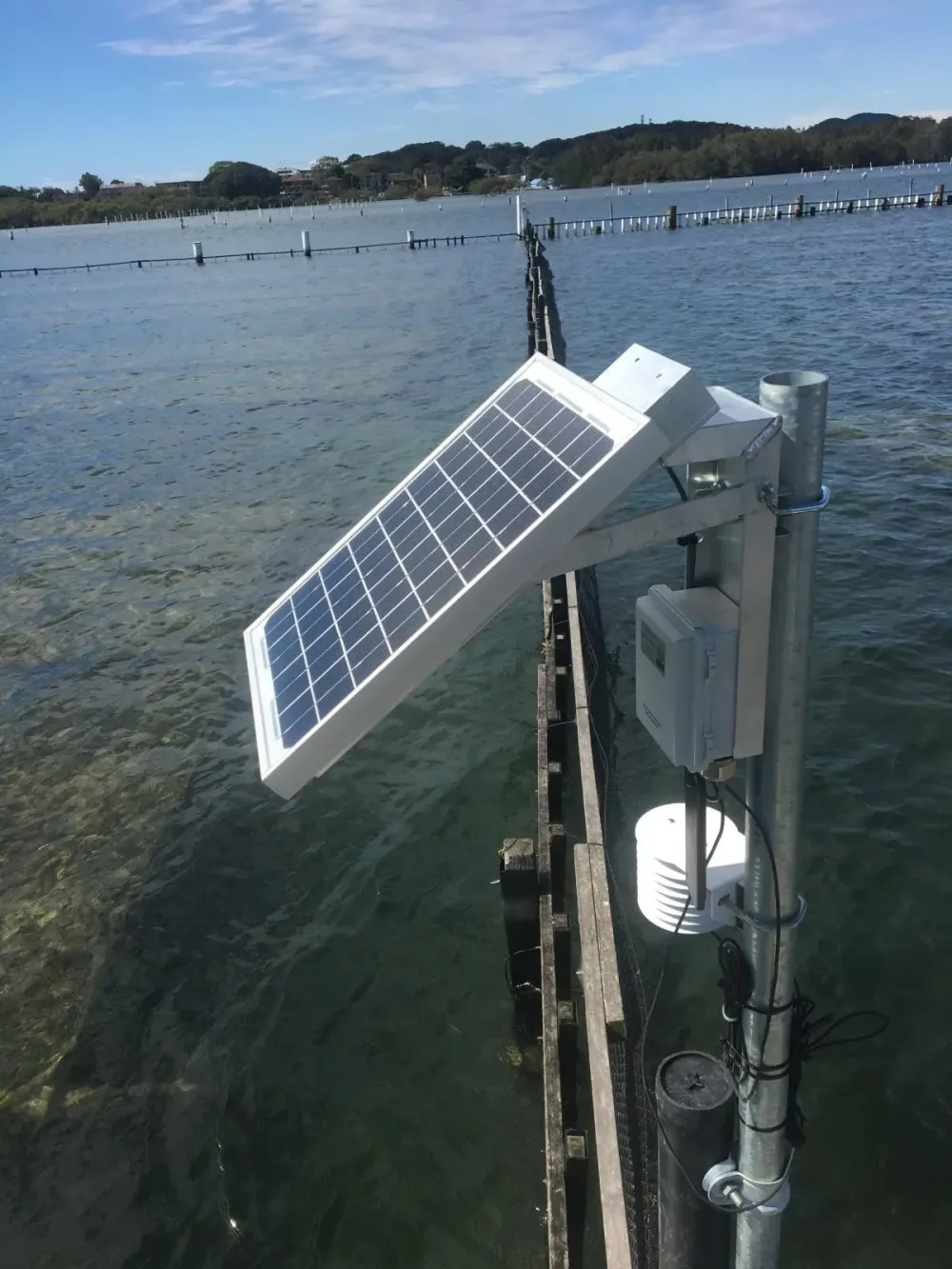Real time IoT monitoring for aquaculture
OVERVIEW
PRODUCTS
LOCATION
IoT enabled harvesting decisions
Water quality determines the production from Aquaculture. High-quality real-time monitoring of the unwanted inputs that can easily find their way into an estuary, from ash and rainfall to sewage or de-oxygenated water from floodplains, ensures estuaries are only closed for harvest when threshold levels are reached. These significant changes to water quality prompts an immediate review of pathogen risk by regulatory authorities.
What to measure to determine safe oyster harvesting conditions?
Low salinity levels (an indication of increased freshwater runoff from the catchment) and water temperature changes are all signals that an estuary may need closing. Accurate measurement of these conditions through the use of IoT enabled sensors reduces the length of closures, increasing the oyster harvest windows.
The following sensors for measuring near real time salinity, water temperature and depth data, along with weather conditions (at selected locations), are connected to the ICT International MFR-NODE for IoT connection:
- AWQ-C4E for water temperature, EC, salinity and TDS-KCI
- ECL 8439 submersible pressure transducer (depth)
- PRP-02 Rain Gauge for rainfall (at select locations)
- THERM-EP thermistor with THERM-RS radiation shield for measurement ambient temperature (at select locations)
From the MFR-NODE the data is transmitted via CATM1 (cellular) network to the ICT International dashboard solution, providing real-time data for compliance and safe harvesting practice.
IoT enabled management of oyster health
Management of optimising oyster health includes the management of over catch (unwanted oysters and other invertebrates). A simple solution, adopted by many oyster growers, is to raise the oyster beds so that they dry in the air over several days.
This drying process allows the larger oysters to survive, whilst killing off the over catch. However, it is not without risk. Over-exposure to high temperatures can lead to oyster mortality or high stress and reduced growth. Optimising these drying regimes to reduce stress will have significant benefits to oyster production by reducing oyster mortality, increasing growth and reducing labour costs.
To measure the conditions, an IoT sensor solution was implemented. Connecting the sensors using a CATM1 MFR-NODE, the data was forwarded to the ICT International dashboard for use by the oyster producers. The sensors used include:
- THERM-SS for water temperature;
- THERM-EP with a Passive Radiation Shield for air temperature;
- AWQ-C4E for salinity and temperature;
- ATMOS-41 for microclimate monitoring
The data collected by these sensors is provided to the oyster leaseholders through the ICT International dashboard. Additionally the data is being utilised for further research by the University of Newcastle and DPI Fisheries aimed at understanding the link between environmental conditions and oyster health. This research will assist oyster farmers to assess conditions in real-time and make accurate, site-specific decisions that reduce over catch while maintaining oyster health.
Long term, the data from the sensor network will continue to be made freely available to oyster farmers and other stakeholders interested in estuary conditions.
About the projects:
IoT enabled harvesting decision:
Part of the Transforming Australian Shellfish Production project, comprising NSW Farmers (Oyster Growers), Food Agility Cooperative Research Centre, NSW Food Authority, the NSW Department of Primary Industries, and the University of Technology Sydney.
IoT enabled management of oyster health:
Part of the Climate Ready Aquaculture project from Hunter Local Land Services and the University of Newcastle and NSW DPI (Fisheries) in conjunction with Australian Government’s National Landcare Program.

